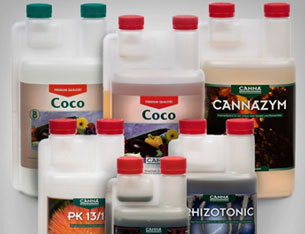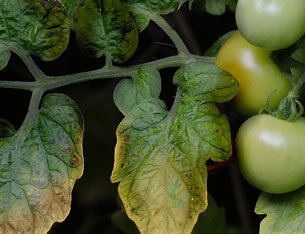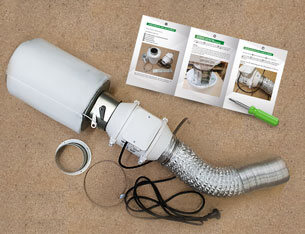- Growing with coco or coco soil offers significantly higher yields compared to growing on soil.
- What are the disadvantages of growing with coco soil?
- Reasons why you should switch to coco
- How to make the perfect nutrient solution for your coco grow
- Coco Grow FAQ - Frequently Asked Questions
Growing with coco or coco soil offers significantly higher yields compared to growing on soil
When growing on coco, not only are the yields higher, but also the levels of terpenes (the flavour and aroma compounds). According to the statistics of the American competition "The Grow-Off", coco growers and their final products entered in the competition form 100% of the winners in the category "terpenes".
Growing on coco therefore guarantees not only the highest yields, but also the best results in terms of quality. So if you already have good genetics and grow on soil, you should not disregard the advantages of coco. The switch is not only feasible for professionals, but also for beginners.
What are the disadvantages of growing with coco soil?
There are two major disadvantages that can put a damper on your decision to use coco.
- Growing on coco is not particularly ecological due to the high use of water and mineral nutrients. Everyone wants to protect the environment and the trend is certainly away from indoor cultivation with extreme use of mineral fertilisers in the long run. So-called "no-kill growing" is the only really environmentally friendly cultivation method here.
- The time required for mixing the nutrient solution and regularly watering the plants (for maximum yield) is significantly higher than when growing on soil. The nutrient solution must be freshly mixed on a regular basis. Simply watering with tap water does not work when growing on coco!
Reasons why you should switch to coco
If you always mix the nutrient solution correctly when growing on coco, your plants will grow much faster and ultimately yield more.
For an ideal nutrient solution, (only) the pH and EC values need to be set correctly. In this article we explain what you need to pay attention to!
After a little practice, mixing the nutrient solution will quickly become routine and your plants will always be 100% healthy and vital. The root system develops extremely well and quickly in coco soil - you could say: plants love coco!
"Coco is like hydroponics on training wheels".
Many German growers swear by soil because hydroponic growing is much more difficult and less fault-tolerant. However, when growing with coco substrate, you enjoy the insane advantages of hydroponic and growing on soil. Even if the coco substrate dries out, your plants will not react any differently than when growing with soil. So you can water your plants normally by hand (1x per day) and still reap the benefits of hydroponics.
However, from the middle of the flowering phase onwards, it is advisable to use an automatic drip irrigation system, because this way you can water or feed several times a day.
So coco is more forgiving than pure hydroponics, which makes it so usable. And did you know that coco can also be used for multiple grows?
So if you are prepared to prepare the nutrient solution correctly on a regular basis, you will get the best results from indoor growing. The medium is easy to use and sterile - it couldn't be easier!
How to make the perfect nutrient solution for your Coco Grow
You will need the following growing equipment for coco growing:
- pH meter or pH test kit with colour scale
- EC meter
- Coco fertiliser
- Acid for pH correction
- Pipettes or measuring cups for dosing
- (Drain)
Let's keep it short and simple:
You need a pH meter to adjust your nutrient solution to a pH value between 5.5 and 6.5. The pH value of your tap water is often too high. Always add the fertiliser first and check the EC and pH at the end. For a low budget coco grow, a test kit with a colour scale is sufficient! The EC value indicates how many nutrients are dissolved in the water. The higher the EC value, the higher the concentration of dissolved nutrients. In the beginning an EC-value of 0.6 - 1.0 is sufficient, and in later phases the EC-value fluctuates between 1.4 and 2.0. In general one can say that often too much fertiliser is used. A low EC value is usually quite sufficient!
When growing on coco, a special coco fertiliser should always be used. Top seller is by far Canna Coco A + B. The two-component fertiliser is always the main fertiliser - everything else are "only" additives! It is also important to add A (stir) first and then B (stir). The fertilisers should therefore not be mixed directly with each other!
Canna Coco instructions:
- Stir Canna Coco A pure
- Stir Canna Coco B pure
- Stir Canna Rhizotonic purely
- Stir Canna Cannazym pure
- (Canna Boost and PK only in the flowering phase)
When you have finished mixing your nutrient solution, the pH-value has to be measured and probably corrected.
Our tip: Fill a measuring cup (100ml) with tap water and add a few millilitres of acid!
Canna recommends the use of nitric acid (pH down grow) for the entire grow. With the diluted acid solution you can now slowly adjust the pH of your nutrient solution. Add a little of the acid solution to your nutrient solution, stir vigorously and check the change with a pH meter. A pH value between 5.5 and 6.5 is perfectly OK. If you use a digital pH-value measuring device, then note that the values go down slowly. You need to hold the pH meter in the solution for 2-3 minutes to get a reasonably stable reading.
To measure the amounts easily and quickly, you should have pipettes and measuring cups at hand. A so-called pipette helper enables exact dosing on a ml basis!
If you want to achieve the best results with Cocos Grow, it is essential to allow unhindered "drainage". You should therefore use a kind of flood table so that excess water can be drained off immediately. Especially for rinsing the plants, you need an easy way to drain a lot of drainage (waste water) away from the plants without any problems, so that no waterlogging occurs. If you work without a drain, you should be careful that the EC value in the cocos does not rise excessively. The EC value increases with too much fertiliser or too many dry phases, because the salts are then deposited in the substrate.
So if you are prepared to mix the nutrient solution correctly on a regular basis, you can immediately benefit from the advantages of growing on coco.
Grow on!
Your Growmart Team
Coco growing FAQ - Frequently asked questions & answers
What is the experience with coco?
Growing on coco is particularly easy as long as you mix the nutrient solution correctly. Experiences with coco are positive all over the world!
Coco how often to water?
When the plants are small, it is sufficient to water when the coco substrate is almost dry. This promotes root growth! In the later growth and flowering phase, you should wet the substrate completely at least once a day.
Coco without drainage, is that possible at all?
Yes, that is no problem at all. When the coco substrate dries out, a lot of salts accumulate. If this happens or if you don't have a good drain, you should keep the EC value rather low, then the Coco Grow will also work without a drain!
Rinse Coco? When and how do you do this?
The coco substrate can also be rinsed without a drain. Ideally, of course, you have the possibility to remove excess salts unhindered, but a low EC value over a longer period of time achieves a similar effect. It is important to start flushing early enough.
What pH value for coco grow?
Many growers state that a pH of 5.8 is optimal when growing on coco.
Which pots to use for coco substrate?
Small and tall pots are ideal. The advantage of small pots is that you can water more often. Air-Pots 3 litres, for example, are ideal because the pots are rather high than wide. This has the great advantage that more water and nutrients can be absorbed by the plants. Gravity pulls the water down immediately - so you should always water less and more slowly, because this is the only way to distribute the nutrient solution throughout the substrate.




